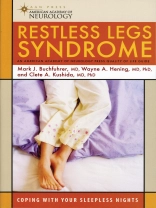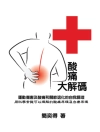The Restless Legs Syndrome Foundation estimates that up to 8 percent of the population suffers with restless legs syndrome (RLS). The hallmark of this neurologic disorder is an irresistible urge to move, most commonly at night. It causes uncomfortable sensations often described as creeping, crawling, tugging, burning, or aching feelings in the calves, feet, thighs, and arms. These disruptive symptoms vary in severity and can result in difficulty staying or falling asleep, fatigue, and impaired daytime function resulting from loss of sleep.
Written by respected leaders in this field and sponsored by the American Academy of Neurology, Restless Legs Syndrome explains what we know about RLS, including its causes and manifestations, and what can be done to manage it. Topics covered include:
- Causes, symptoms, and diagnosis
قائمة المحتويات
Introduction
History of Restless Legs Syndrome
Diagnosis
Who Gets Restless Legs Syndrome?
What Are the Symptoms of Restless Legs Syndrome?
What Are the Causes of Restless Legs Sydrome?
Non-Pharmacologic Therapy
Intermittent Treatment of RLS with Medication
Treating Daily RLS with Medication
Non-Responsive RLS Treatment with Medication
Augmentation, Rebound, and Tolerance
Treatment of Secondary RLS
Treating Periodic Limb Movement Disorder
RLS in Children
Your Role in Managing RLS
RLS and Relationships
Finding a Doctor to Treat Your RLS
The Future
Resources
Glossary












